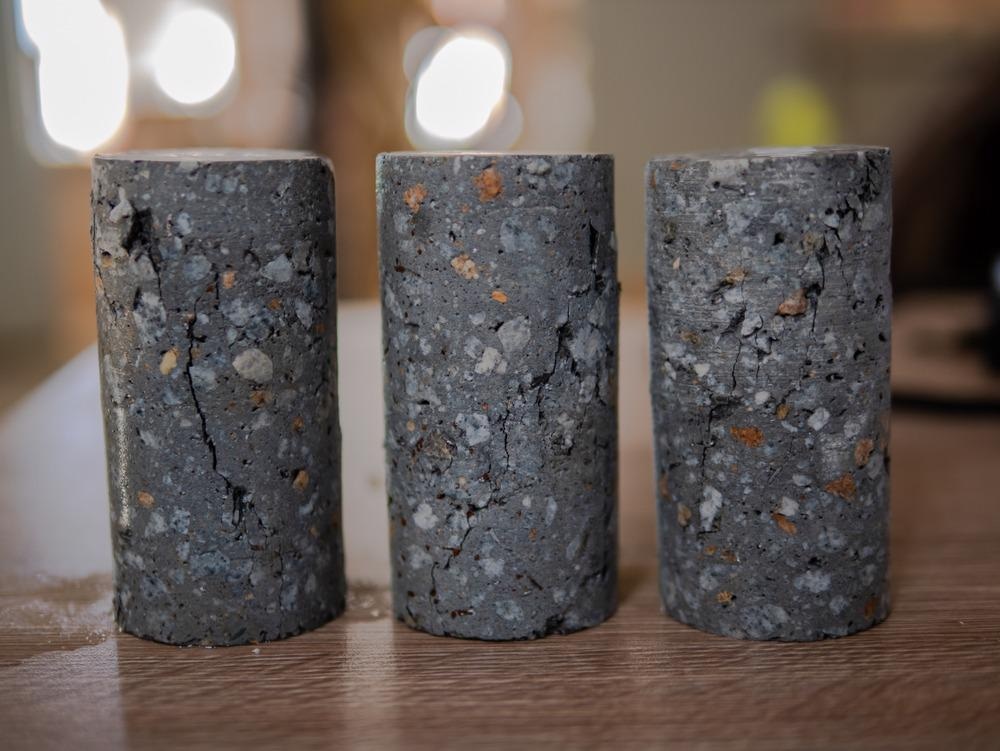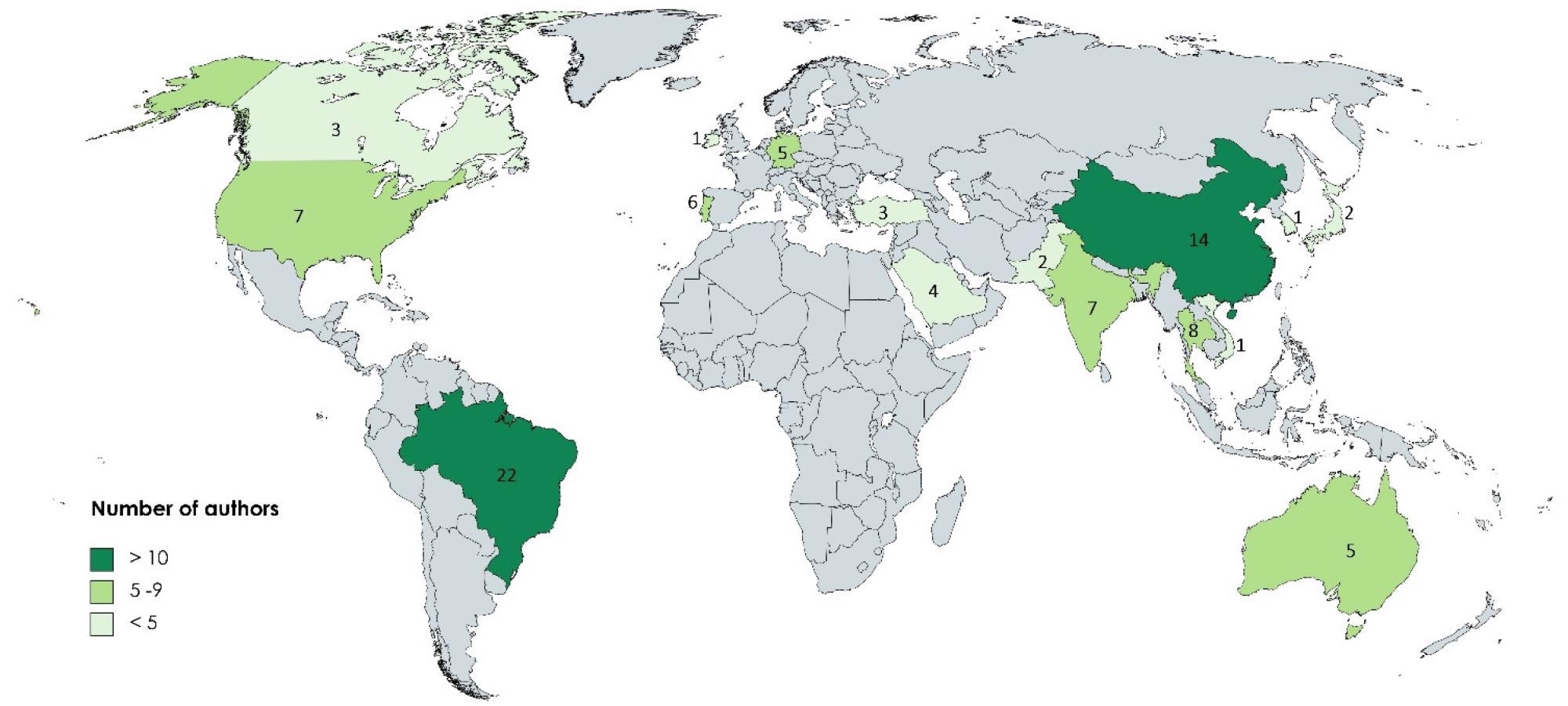Geotechnical design can contribute to the sustainability of urban areas and the built environment. A study published in Sustainability has set out to provide a summary of literature in the area published in 2020-2021 to highlight their main conclusions and provide a review of current knowledge.

Study: Sustainability in Geotechnics through the Use of Environmentally Friendly Materials. Image Credit: Tohsurat/Shutterstock.com
Geotechnics can help to reduce the carbon footprint of new and existing structures, conferring huge benefits in the face of growing climate change.
The Sustainability Challenge in Civil Engineering
Climate change and environmental damage are well-documented. The growth of urban areas and the built environment is one of the key drivers of climate change and increasing the sustainability and resilience of areas such as cities is a key concern for civil engineers worldwide.

The number of contributions per country (based on first author affiliation). Image Credit: Vieira, C.S., Sustainability
Geotechnical engineering is a branch of civil engineering which uses cost-effective and environmentally friendly solutions to contribute to sustainability in the built environment. This branch of engineering investigates the mechanics of rock and soil. Geotechnical engineering includes the analysis and design of elements such as foundations, slopes, retaining structures, tunnels, roads, embankments, levees, wharves, and other systems that are either constructed from or supported by rock or soil.
Often overlooked throughout the years, geotechnical engineering is an integral part of the progress toward a more sustainable future for human population centers and associated infrastructure. Geotechnical engineering and design can play a pivotal role in construction projects from the design stage to the final construction and over the lifetime of buildings and infrastructure. Sustainable alternatives to common construction materials such as concrete are commonly used in geotechnical engineering and design.
The Study
The study in Sustainability has provided an extensive review of current literature and research perspectives in geotechnical engineering and design and the increasing use of sustainable materials in construction projects. The diversity of topics covered by the twenty-three selected research papers attests to the field’s potentially huge contribution to the future sustainability of the built environment.
The research papers highlighted in the study cover topics such as sustainable techniques to improve ground conditions, soil reinforcement using recycled materials, using recyclable materials to replace soils and quarry materials, and preventing contamination of soil using geosynthetics. Other research areas included using geosynthetics as alternative fillers for reinforcement applications, preventing soil erosion with bioengineering techniques, and low-carbon contaminated soil stabilization solutions.
The study presented papers from ninety-one researchers from sixteen countries, attesting to the global scale of research interest. Based on the first author’s institution, the greatest number of papers chosen came from Brazil (seven papers), with Indian institutions making three contributions to the study. Other nations which have contributed to the study include China, Portugal, Australia, Thailand, Korea, Pakistan, Germany, the USA, Turkey, Canada, and Vietnam.
Contribution Highlights
Highlights of the contributing paper’s conclusions have been presented by the authors behind the review study in Sustainability.
Reddy et al. have presented a laboratory study on limestone-calcined clay cement, which is a low-carbon material. This cement can be used to stabilize/solidify soils contaminated with lead and zinc. The material can improve compressive strength, and after curing, heavy metals are absorbed. The results of this study demonstrated that the clement is a sustainable and green remediation treatment and can be used as a construction material that is safe and eco-friendly.

The number of authors from different countries (excluding authors with more than one contribution). Image Credit: Vieira, C.S., Sustainability
Hanafi et al. have studied the durability of a marine clay which had been treated with materials such as hydrated lime, copper slag, and cement. Reduced cement use, the safe reuse of waste copper slag material, and a reduction in embodied carbon and emissions were claimed by the authors as the main benefits of the material. Ma et al. have explored the use of soda residue as an alternative material for geotechnical engineering.
Lavoie et al. have evaluated the performance of high-density polyethylene geomembranes for environmental protection. Marçal et al. have discussed the mechanical properties of polypropylene waste reinforced compacted lateritic soils. The effect of PET strips on the mechanical properties of cement-treated sandy soil has been discussed and evaluated by Silveira et al.
Palmeira et al. have reviewed the use of waste materials such as demolition waste, plastic bottles, and waste tires as alternative materials in geotechnical construction and geoenvironmental projects. A conclusion of the study is that whilst reusing waste materials has environmental benefits, these materials may contain substances that can cause contamination and can degrade over time. Any use of waste materials must consider these factors. Geosynthetics and geocomposites can act as barriers, reducing the impact of these contaminants.
Future Perspectives
The review has presented a significant review of current research into alternative, sustainable materials for geoengineering and geotechnical design projects. The authors have stated that there is still plenty of scope for new contributions in the field, and therefore will continue to accept new contributions, turning the study into an ongoing collection.
Further Reading
Vieira, C.S. (2022) Sustainability in Geotechnics through the Use of Environmentally Friendly Materials [online] Sustainability 14(3) 1155 | mdpi.com. Available at: https://www.mdpi.com/2071-1050/14/3/1155
Disclaimer: The views expressed here are those of the author expressed in their private capacity and do not necessarily represent the views of AZoM.com Limited T/A AZoNetwork the owner and operator of this website. This disclaimer forms part of the Terms and conditions of use of this website.